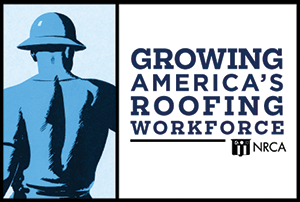Construction industry needs more than 500,000 workers in 2023

|
The construction industry will need to attract an estimated 546,000 additional workers on top of the normal pace of hiring in 2023 to meet the demand for labor, according to Associated Builders and Contractors.
A proprietary model developed by Associated Builders and Contractors uses the historical relationship between inflation-adjusted construction spending growth from the U.S. Census Bureau’s Construction Put in Place survey, as well as payroll construction employment from the U.S. Bureau of Labor Statistics, to convert anticipated increases in construction outlays into demand for construction labor at a rate of about 3,620 new jobs per billion dollars of additional construction spending. The increased demand is added to the current level of above-average job openings; calculations also include projected industry retirements, shifts to other industries and other forms of anticipated separation.
The construction industry averaged more than 390,000 job openings per month in 2022—the highest level on record—and the industry unemployment rate of 4.6% in 2022 was the second lowest on record. National payroll construction employment was 231,000 higher in December 2022 than in December 2021.
“Despite sharp increases in interest rates over the past year, the shortage of construction workers will not disappear in the near future,” says Associated Builders and Contractors Chief Economist Anirban Basu. “First, while single-family home building activity has moderated, many contractors continue to experience substantial demand from a growing number of mega-projects associated with chip manufacturing plants, clean energy facilities and infrastructure. Second, too few younger workers are entering the skilled trades, meaning this is not only a construction labor shortage but also a skills shortage.
“With nearly one in four construction workers older than 55, retirements will continue to whittle away at the construction workforce,” Basu continues. “Many of these older construction workers also are the most productive, refining their skills over time. The number of construction laborers, the most entry-level occupational title, has accounted for nearly four out of every 10 new construction workers since 2012. Meanwhile, the number of skilled workers has grown at a much slower pace or, in the case of certain occupations like carpenter, declined.”
NRCA launches podcast addressing the roofing industry workforce
 |
NRCA has launched a new podcast series, “Growing America’s Roofing Workforce.” Episodes will discuss ways to recruit, train and retain future members of the roofing industry and focus on one simple question: What can we all do to help grow the roofing industry’s future?
In the first episode, “Making Connections: From CTE to ProCertification,” Tony Rader, COO of National Roofing Partners, Coppell, Texas, reveals how his company and its 238 roofing service partners are helping the U.S. workforce development effort. In the second episode, “Rehabilitation Through the Trades,” Doug Van Dyke, president of Van Martin Roofing, Dayton, Ohio, discusses Emerge, a trades educational program that houses at-risk individuals and creates a support system to help them succeed.
NRCA will release a new podcast episode monthly. Episodes are available at roofingworkforce.podbean.com; on NRCA’s website, nrca.net; or wherever you get your podcasts, including Apple, Google and Spotify.
Female construction workers identify ways to improve the industry

|
The National Center for Construction Education & Research reports workers are retiring from the construction industry much faster than new people are being hired, and for every four people who leave, only one enters, according to Construction Dive. Meanwhile, the industry is seeing rising demand for workers as the Infrastructure Investment and Jobs Act and the CHIPS Act bring more projects. Recruiting and retaining women—who currently make up 14% of the overall construction workforce—is crucial.
To learn more about women’s experiences in construction, NCCER surveyed women in the trades and met with them in groups. Following are some identified key challenges.
- Discrimination and sexual harassment. Women said they felt disrespected and subjected to unprofessional treatment more often than men, and nearly half said they had been the target of derogatory comments or jokes at work. Establishing and publishing a sexual harassment prevention policy is important.
- Bias in the hiring process. Companies often require a recommendation before interviewing for a position, which can hurt women, who are less likely to know someone in the field. It is crucial employers ensure consistent hiring practices.
- Lack of flexibility for care work. Women are responsible for a disproportionate amount of care work in the U.S., and lack of employer accommodations is a significant obstacle. Providing support via clear working hours, schedule flexibility and consistent paid time-off policies can help.
- Lack of training opportunities. Women surveyed voiced a need to establish training programs to bring women into the industry.
- Unequal treatment. Women want to be held to the same standards, receive the same training and pay, and have the same career advancement opportunities.
- Few women in site leadership positions. Fifty-seven percent of women said they had never had a female supervisor. There must be an intentional plan in place to identify and develop potential women leaders.
- Poor job-site experience. Two job-site problem areas mentioned are bathroom facilities and properly fitted workwear and equipment. Women surveyed noted a lack of access to restrooms stocked with feminine hygiene products and said most PPE and clothing are not designed to fit women.
Construction salaries are rising faster than most industries

|
As construction wages rise in response to inflation and an industry labor shortage, contractors continue to struggle to attract and keep talent, according to Construction Dive.
The Associated General Contractors of America’s 2023 Construction Hiring & Business Outlook, which gathered data from more than 1,000 construction firms, shows average hourly earnings for construction workers rose 6.1% from December 2021 to December 2022—higher than the 5% increase in average pay for all private sector production workers.
Although 72% of contractors increased base pay rates and about one-third boosted bonuses and benefits in 2022, 80% reported having difficulty filling positions. Associated Builders and Contractors of America reports workforce shortages likely will worsen, with 69% of contractors expecting to need more workers in 2023.
“Contractors now are competing not only with other contractors but also with Amazon and the distribution segment and potentially jobs that offer remote work,” says Associated Builders and Contractors of America Economist Zachary Fritz. “So that’s pushed wages up, and they’ve particularly accelerated over the past year. Construction wages have increased faster than overall wages in 10 of the past 12 months and increased at a faster rate than overall monthly inflation in each of the past six months.”
Associated General Contractors of America Chief Economist Ken Simonson says construction companies always have had to pay a premium to attract workers; that premium averaged 21.5% from 2000 to 2019 but, despite wage increases this year, has dropped to 18%. He says firms are going to have to raise pay even more to meet or exceed the historic premium.
Contractors are trying to find other ways to attract workers, including employee coaches, direct access to company leaders, more paid time off, and more work-life balance. More construction companies also are moving toward creating employee-owned organizations.



